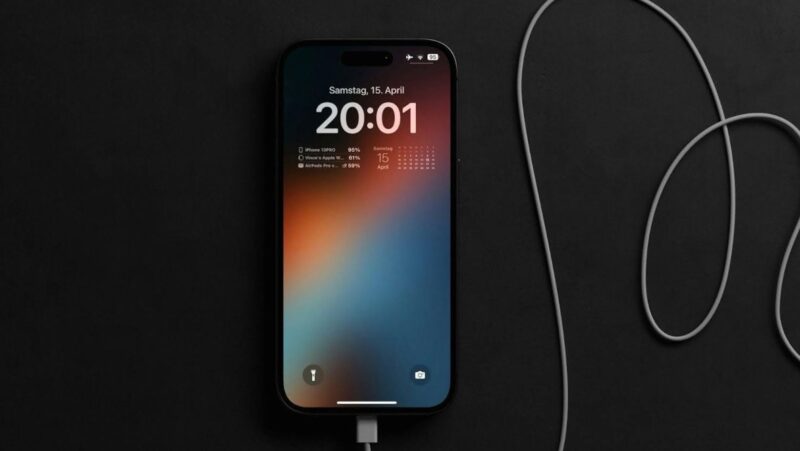
The fitness app industry has exploded in popularity, fueled by a global shift toward health-conscious lifestyles and the convenience of mobile technology. With millions of users turning to apps for workouts, nutrition tracking, and wellness coaching, developers face the challenge of turning user engagement into sustainable revenue. Effective monetization strategies are crucial for app longevity, allowing creators to invest in updates, features, and user experience enhancements. As the market matures, a blend of traditional and innovative approaches can help fitness apps thrive in a competitive landscape. This article examines various monetization tactics, their implementations, advantages, and potential pitfalls, drawing on industry trends to provide a comprehensive overview.
The Freemium Model: Accessible Entry with Upsell Opportunities
The freemium model stands as a cornerstone for many fitness apps, offering basic features at no cost to attract a broad user base while reserving advanced functionalities for paying customers. This approach lowers the barrier to entry, encouraging downloads and habitual use before prompting upgrades. For instance, users might access standard workout routines and progress tracking for free, but pay for personalized plans or ad-free experiences.
- How It Works: Core app functions are free, with premium tiers unlocked via one-time payments or subscriptions. Revenue grows as users convert based on perceived value.
- Advantages: High user acquisition rates, viral potential through word-of-mouth, and data collection for targeted marketing.
- Drawbacks: Risk of low conversion rates if free features are too comprehensive, leading to revenue stagnation.
- Examples: Apps like Nike Training Club provide free workouts but charge for specialized programs.
Subscription Services: Building Recurring Revenue Streams
Subscription models dominate the fitness app space by providing ongoing value through regular content updates, community access, and personalized coaching. Users pay monthly or annually for uninterrupted access, fostering loyalty and predictable income for developers. This strategy aligns well with the recurring nature of fitness goals, where users seek continuous motivation and progress monitoring.
Specialized fitness software development plays a key role in implementing robust subscription systems, ensuring seamless billing, user retention analytics, and feature gating to maximize conversions.
- How It Works: Tiered plans offer varying levels of access, from basic tracking to VIP coaching sessions and exclusive challenges.
- Advantages: Steady cash flow, higher lifetime value per user, and opportunities for upselling through add-ons.
- Drawbacks: High churn rates if content feels stale, requiring constant innovation to justify costs.
- Examples: Peloton’s app charges for live classes and metrics, while Calm integrates fitness with mindfulness subscriptions.
In-App Purchases: Micro-Transactions for Enhanced Experiences
In-app purchases (IAPs) allow users to buy virtual goods, boosts, or one-off features directly within the app, capitalizing on impulse decisions during workouts or goal-setting moments. This strategy is particularly effective in gamified fitness apps, where users might purchase workout packs, virtual gear, or premium challenges to accelerate progress. In-app purchase effectiveness is making it prevalent.
- How It Works: Items are sold via app stores, with developers earning a cut after platform fees. Integration with user profiles ensures personalized recommendations.
- Advantages: Flexible revenue without mandatory payments, complements freemium models, and encourages habitual spending.
- Drawbacks: Potential for user frustration if perceived as pay-to-win, and dependency on high engagement levels.
- Examples: Zombies, Run! sells story expansions, while Fitbit offers premium insights as IAPs.
As noted in industry analyses, in-app purchases form a core part of mobile app monetization, often combined with other tactics for diversified income.
Advertising and Sponsorships: Leveraging User Attention
Advertising remains a viable option for fitness apps, especially those with large free user bases, by displaying banners, interstitials, or rewarded videos from relevant brands. Sponsorships take this further, involving partnerships where companies pay for branded content, challenges, or integrations that align with user interests.
- How It Works: Ads are served through networks like Google AdMob, with revenue based on impressions or clicks. Sponsorships involve custom campaigns, such as a sports drink brand funding a hydration challenge.
- Advantages: Low-risk entry for monetization, scalable with user growth, and potential for authentic brand alignments.
- Drawbacks: Ads can disrupt user experience if intrusive, leading to uninstalls; sponsorships require careful vetting to maintain trust.
- Examples: Strava partners with gear brands for sponsored routes, while MyFitnessPal displays nutrition-related ads.
Affiliate Marketing and Partnerships: Commission-Based Earnings
Affiliate programs enable fitness apps to earn commissions by promoting third-party products, such as supplements, apparel, or equipment, through referral links or discount codes. This strategy adds value by offering users curated recommendations, turning the app into a wellness hub.
- How It Works: Users click affiliate links during workouts or in-app stores, with apps tracking sales for commissions. Partnerships might include co-branded events or exclusive deals.
- Advantages: Passive income stream, enhances user loyalty with perks, and diversifies revenue beyond direct sales.
- Drawbacks: Dependency on partner performance and relevance; over-promotion can erode credibility.
- Examples: Sweatcoin rewards steps with affiliate-linked purchases, while 8fit promotes meal kits via partnerships.
Premium Content and Paywalls: Gating Exclusive Value
Paywalls restrict access to high-value content, such as expert-led videos, advanced analytics, or community forums, behind a payment barrier. This model suits apps with strong content creation, where users pay for depth rather than breadth.
- How It Works: Content is teased in free sections, with full access unlocked via subscriptions or one-time fees. Dynamic paywalls adjust based on user behavior.
- Advantages: Rewards quality content creators, builds a premium user community, and supports ongoing development.
- Drawbacks: May alienate casual users; requires compelling teasers to drive conversions.
- Examples: Centr by Chris Hemsworth locks celebrity workouts behind paywalls, while Headspace fitness modules use similar gating.
Data Monetization: Ethical Insights for Revenue
While controversial, anonymized user data can be monetized through aggregated insights sold to researchers or insurers, provided strict privacy compliance is maintained. Fitness apps collect metrics on habits and outcomes, offering valuable trends without compromising individual data.
- How It Works: Data is anonymized and packaged for sale, often via APIs, with user consent emphasized. Revenue comes from licensing or partnerships.
- Advantages: High-margin potential from existing assets, supports industry research, and can fund app improvements.
- Drawbacks: Privacy risks and regulatory hurdles; misuse can lead to backlash and legal issues.
- Examples: Some apps like Fitbit share aggregated data with health studies, generating indirect revenue.
Emerging Trends in Fitness App Monetization
As technology evolves, new monetization avenues are emerging, including Web3 integrations like NFTs for virtual fitness achievements or metaverse-based classes. AI-driven personalization could enable dynamic pricing, where fees adjust based on user progress.
- NFTs and Blockchain: Sell digital collectibles tied to milestones, creating scarcity and community value.
- Metaverse Experiences: Charge for virtual gym sessions or events in immersive environments.
- AI-Powered Upsells: Use machine learning to suggest tailored purchases at optimal times.
- Sustainability Tie-Ins: Partner with eco-brands for green challenges, appealing to conscious consumers.
These trends reflect a shift toward experiential and tech-forward revenue models.
Challenges and Best Practices
Monetizing fitness apps involves balancing user satisfaction with profitability. Common challenges include high competition, platform fees (up to 30% on app stores), and evolving user expectations for free content.
- Best Practices: Conduct A/B testing on pricing, prioritize user feedback, and diversify strategies to mitigate risks.
- Ethical Considerations: Transparency in data use and ad placements builds trust, essential for retention.
- Analytics Integration: Tools like Google Analytics help track conversion funnels and optimize monetization.
By addressing these, developers can create resilient revenue models.
Summing Up
Monetization strategies for fitness applications must adapt to user behaviors, technological advancements, and market dynamics to ensure long-term success. From freemium access that hooks users to sophisticated subscriptions and partnerships that add depth, the key lies in delivering genuine value. As the industry grows, blending multiple tactics-such as IAPs with advertising-can provide stability amid fluctuations. With careful implementation, fitness apps not only sustain themselves but also contribute to a healthier global community, leveraging innovation to turn passion for wellness into profitable ventures.











